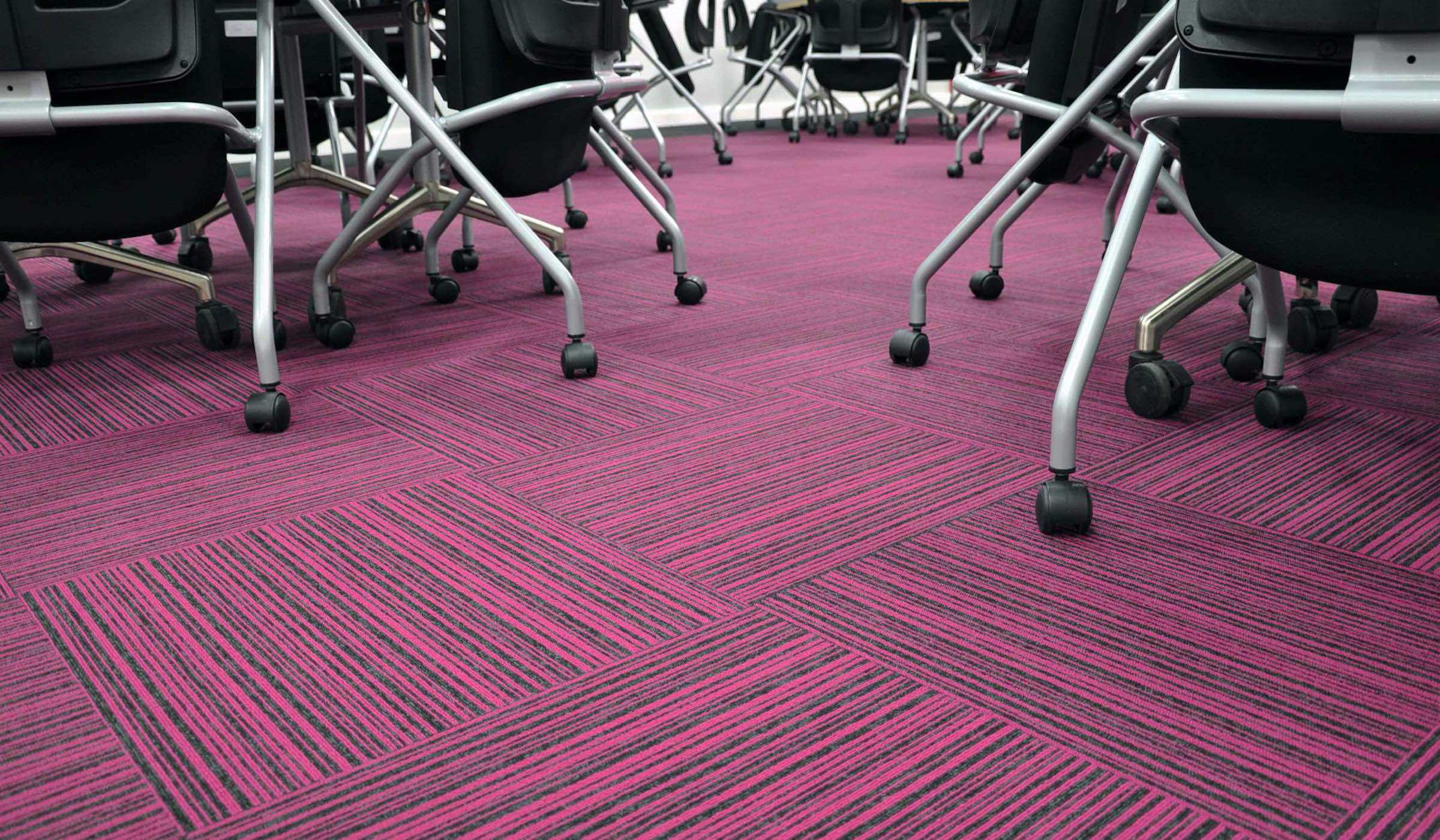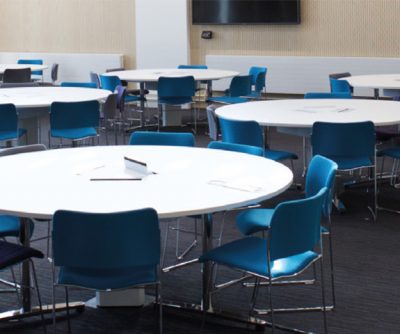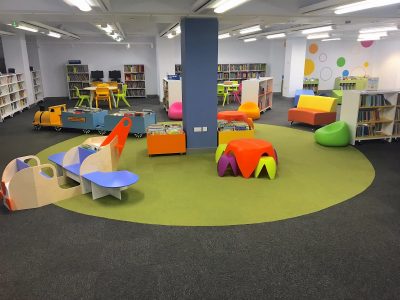
Sustainable design is a great way to bring the environment into the classroom, and teach children of all ages about climate change.
Not only does teaching sustainability in the classroom help students become more aware of global issues; eco-friendly classroom design can also save money and help future-proof school buildings.
Here are six simple, cost-effective tips to help you incorporate sustainable classroom design into your next education project.
-
Use recycled materials

Bringing reused, recycled or repurposed materials into your classroom design is great for the environment. Often the items will have a story attached to them about where they originally came from, which can help teach children about the importance of wasting less.
Many of our commercial carpet tiles, like our Total Contrast Range, are manufactured using Aquafil’s ECONYL® yarn, which is made from recycled nylon from fishing nets and other scrap materials. This makes our carpet tiles for schools an ultra-sustainable flooring option!
2. Invest in pieces that will stand the test of time

High-quality, well-made products that are designed to last for years to come are better for the environment than cheaply made options. This is because they don’t need to be replaced as often, cutting down the number of raw materials used.
Our heavy contract carpet tiles for schools are hardwearing and able to withstand the hustle and bustle of busy classrooms and communal areas. With many products coming with a 10-year warranty, Paragon Carpet Tiles are a long-lasting educational flooring solution that can inspire for the future.
3. Find manufacturers with low carbon emissions

If you want to really bring sustainability into the classroom, it’s important to choose manufacturers that are dedicated to cutting down their carbon footprint. This is another great talking point to educate students about how much energy it takes to manufacture products, and how this impacts global warming.
Paragon Carpet Tiles are dedicated to reducing our greenhouse gas emissions. In fact, our emissions are less than 1% of government targets! We also have a zero-waste policy, which includes recycling all our yarn, cardboard and plastic waste, and turning all our general rubbish into a fossil fuel replacement in a ‘Solid Recoverable Fuel’ programme.
4. Choose flexible flooring options
Flexible spaces that have multiple purposes are more eco-friendly, as they maximise the space available and minimise heating and electricity usage.
Commercial carpet tiles are a great way to do this, as you can use carpet tiles for schools to create walkways and breakout spaces to form multiple learning environments.
Plus, if one section of the floor is damaged or stained, you only have to replace the one carpet tile, not the whole surface area! Not only is this better for the planet, it’s also very cost-effective.
5. Improve indoor air quality

We mainly think of air pollution as being outside. However, when students and teachers move through education buildings, especially in inner-city areas, they bring in pollution from the streets. This then disperses through the classrooms, worsening the air quality.
There are many things you can do to improve indoor air quality when designing a project for education, and installing carpet is one of the cheapest and easiest. Carpet, including commercial carpet tiles, absorbs dust, dirt and viruses, helping to combat indoor air pollution and improve hygiene.
6. Save energy wherever you can

Factoring energy-saving solutions in your sustainable classroom design is one of the best ways to make a school eco-friendly. Not only does reducing heating and electricity usage help the planet, it also saves the education facility money.
If you’re looking for energy-saving flooring for schools, Paragon Carpet tiles are great thermal insulators. The fibres trap heat, keeping the room warmer, especially in winter months. This reduces heating costs and releases fewer C02 emissions.
Hopefully these sustainable design tips inspire your next education project! If you want more information about our carpet tiles for education, click here.
Here at Paragon, we put the environment first in everything we do. From our Zero-Waste Policy to our use of ECONYL yarn, discover 8 Ways That Paragon Carpet Tiles are Eco-Friendly.



